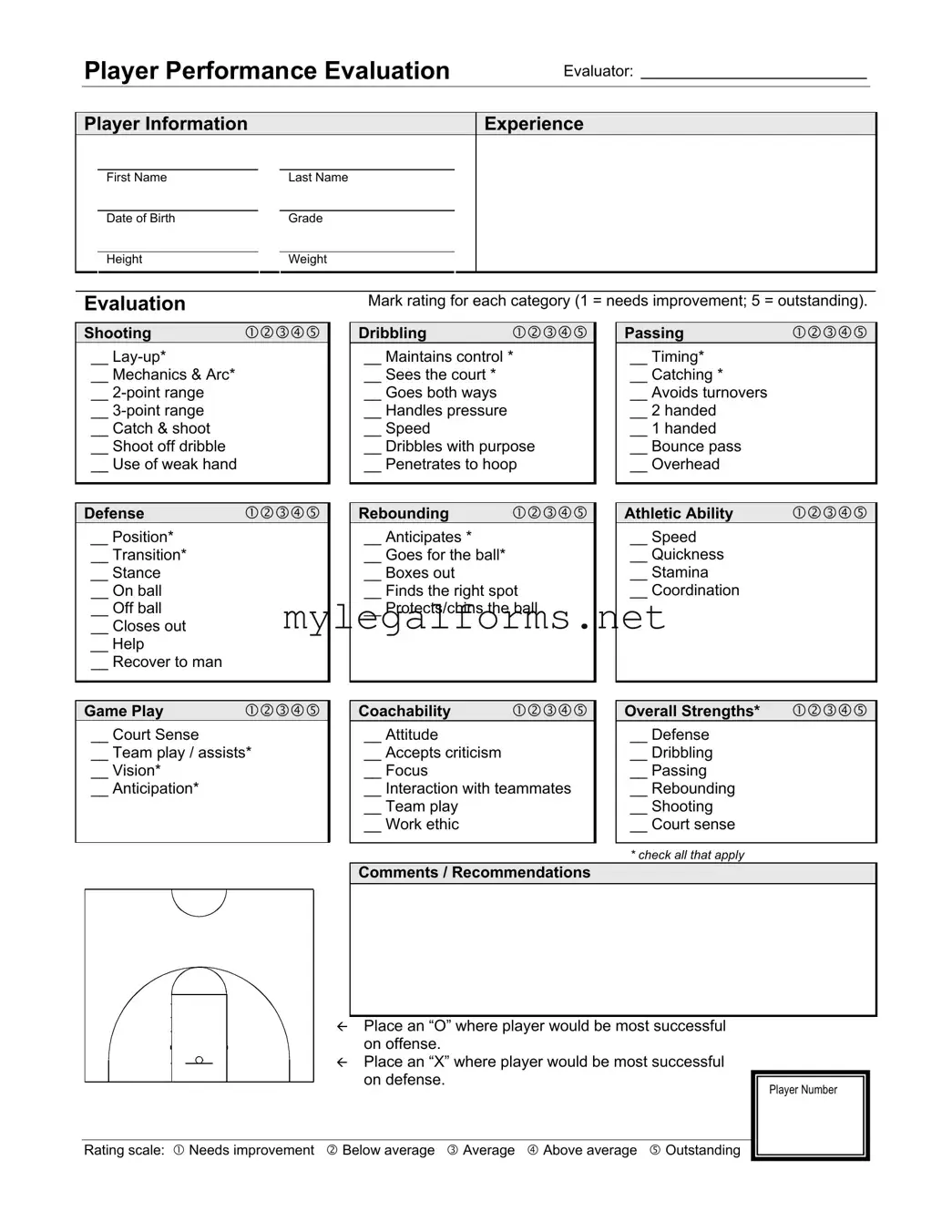The Basketball Evaluation Form serves as a comprehensive tool for assessing a player's skills and overall performance on the court. It covers various aspects of a player's abilities, including shooting, defense, dribbling, rebounding, passing, and athleticism. Each category is rated on a scale from 1 to 5, allowing evaluators to provide nuanced feedback on strengths and areas for improvement. For instance, shooting evaluations consider mechanics, range, and the ability to shoot off the dribble. Defense assessments look at positioning, on-ball and off-ball skills, and the ability to help teammates. Dribbling evaluations focus on control and decision-making under pressure, while passing metrics examine timing and the ability to avoid turnovers. The form also includes sections on athletic ability, game play, and coachability, highlighting the player's attitude and work ethic. Overall strengths can be noted, along with specific comments and recommendations to guide future development. This structured approach not only helps coaches identify talent but also aids players in understanding their progress and areas to focus on for improvement.

